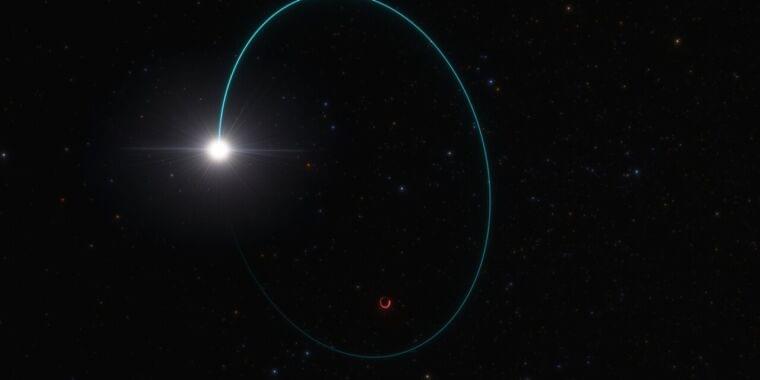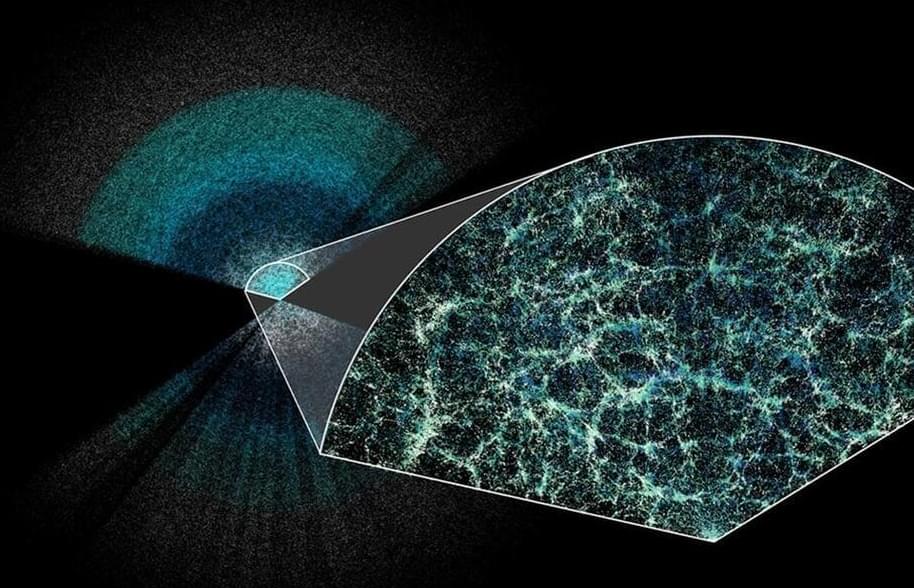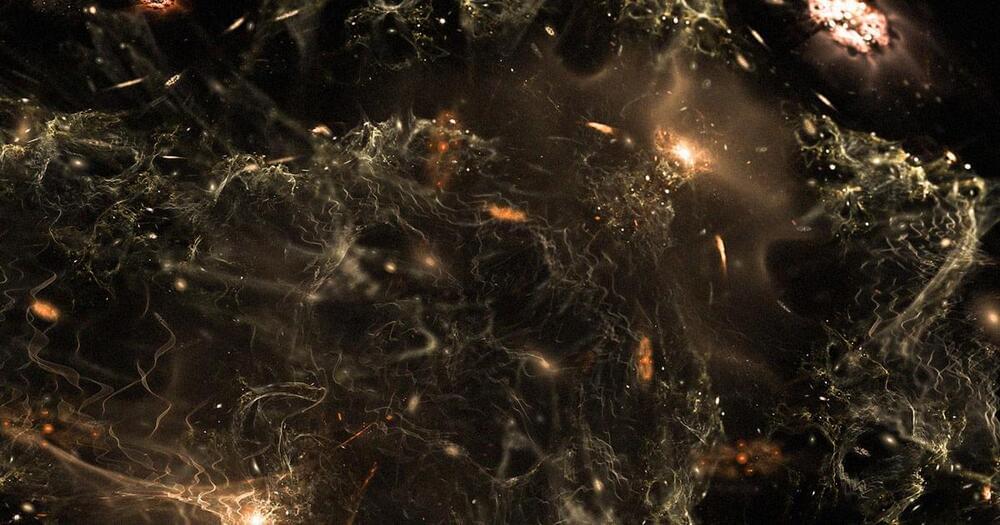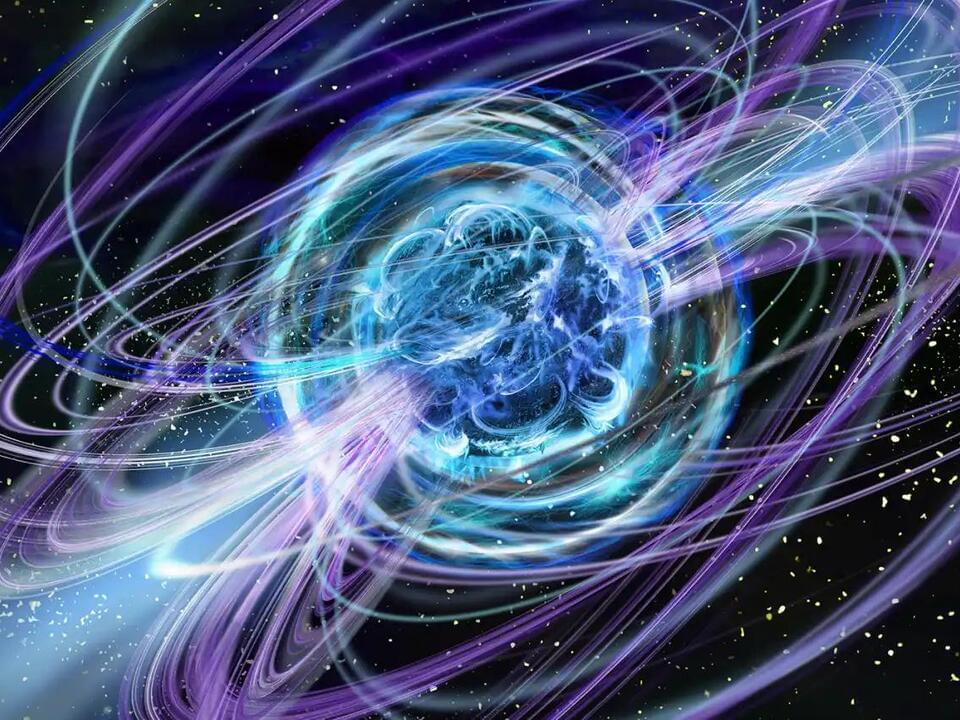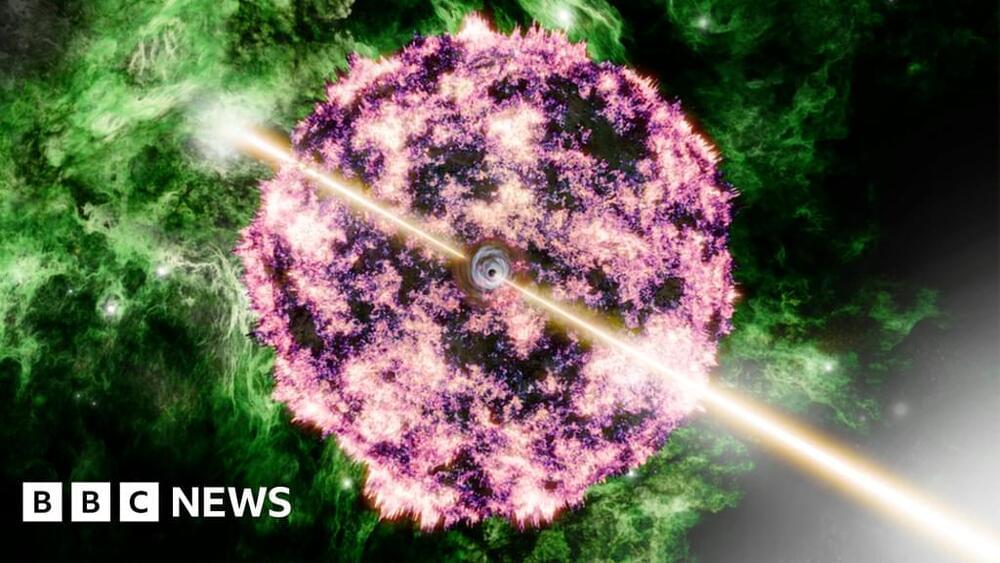Archive for the ‘cosmology’ category: Page 2
Apr 17, 2024
Dark energy could be getting weaker, suggesting the universe will end in a ‘Big Crunch’
Posted by Dan Breeden in category: cosmology
I found this on NewsBreak: Dark energy could be getting weaker, suggesting the universe will end in a ‘Big Crunch’
The first year of Dark Energy Spectroscopic Instrument (DESI) data seems to show that dark energy is weakening over time, possibly the biggest cosmological discovery for 25 years.
Apr 17, 2024
Unraveling Dark Energy and Cosmic Expansion With an 11-Ton Time Machine
Posted by Dan Breeden in categories: cosmology, mapping, time travel
I found this on NewsBreak: Unraveling Dark Energy and Cosmic Expansion With an 11-Ton Time Machine.
Apr 17, 2024
Most massive stellar black hole in the Milky Way discovered ‘extremely close’ to Earth
Posted by Dan Breeden in categories: cosmology, physics
I found this on NewsBreak: Most massive stellar black hole in the Milky Way discovered ‘extremely close’ to Earth.
Astronomers have found the most massive stellar-mass black hole ever discovered in our galaxy — and it’s lurking “extremely close” to Earth, according to new research.
The black hole, named Gaia BH3, is 33 times more massive than our sun. Cygnus X-1, the next-biggest stellar black hole known in our galaxy, weighs only 21 solar masses. The newfound black hole is located roughly 2,000 light-years away in the constellation Aquila, making it the second-closest known black hole to Earth.
Apr 17, 2024
Top Astronomers Gather to Confront Possibility They Were Very Wrong About the Universe
Posted by Kelvin Dafiaghor in category: cosmology
A number of high-profile astronomers are set to convene at London’s Royal Society to question some of the most fundamental aspects of our understanding of the universe.
As The Guardian reports, the luminaries of cosmology will be re-examining some basic assumptions about the universe — right down to the over-a-century-old theory that it’s expanding at a constant rate.
“We are, in cosmology, using a model that was first formulated in 1922,” coorganizer and Oxford cosmologist Subir Sarkar told the newspaper, in an apparent reference to the year Russian astronomer Alexander Friedmann outlined the possibility of cosmic expansion based on Einstein’s general theory of relativity.
Apr 16, 2024
Most massive stellar black hole in our galaxy found
Posted by Saúl Morales Rodriguéz in category: cosmology
Astronomers have identified the most massive stellar black hole yet discovered in the Milky Way galaxy. This black hole was spotted in data from the European Space Agency’s Gaia mission because it imposes an odd ‘wobbling’ motion on the companion star orbiting it. Data from the European Southern Observatory’s Very Large Telescope (ESO’s VLT) and other ground-based observatories were used to verify the mass of the black hole, putting it at an impressive 33 times that of the sun.
Apr 14, 2024
Stargates: We are fascinated by portals between worlds
Posted by Dan Breeden in categories: cosmology, media & arts
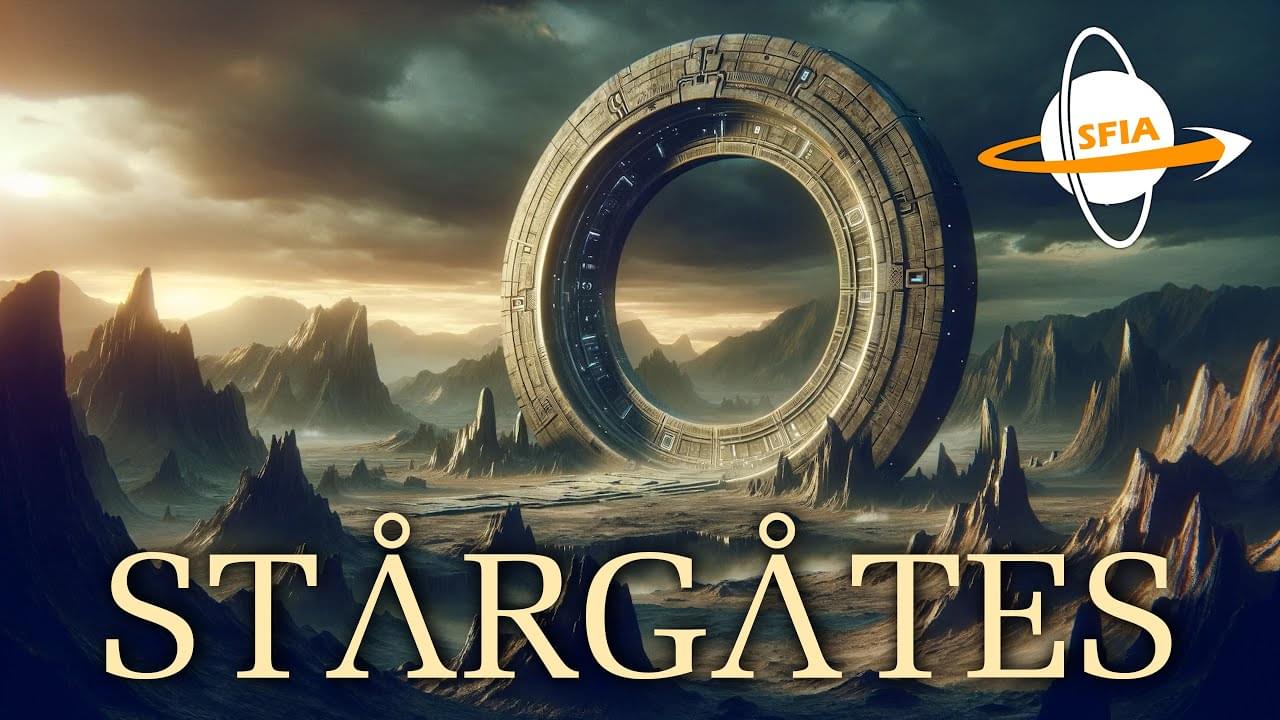
Gateways between stars, wormholes through the fabric of reality, but could these be real, and if so, what would the civilizations using them be like?
Watch my exclusive video Galactic Beacons: https://nebula.tv/videos/isaacarthur–…
Get Nebula using my link for 40% off an annual subscription: https://go.nebula.tv/isaacarthur.
Join this channel to get access to perks:
/ @isaacarthursfia.
Visit our Website: http://www.isaacarthur.net.
Join Nebula: https://go.nebula.tv/isaacarthur.
Support us on Patreon: / isaacarthur.
Support us on Subscribestar: https://www.subscribestar.com/isaac-a…
Facebook Group: / 1583992725237264
Reddit: / isaacarthur.
Twitter: / isaac_a_arthur on Twitter and RT our future content.
SFIA Discord Server: / discord.
Continue reading “Stargates: We are fascinated by portals between worlds” »
Apr 14, 2024
Warp Drives: New Simulations
Posted by Dan Breeden in categories: cosmology, mathematics, physics, space travel

Learn more from a science course on Brilliant! First 30 days are free and 20% off the annual premium subscription when you use our link ➜ https://brilliant.org/sabine.
Hyperjumps, wormholes, and warp drives sound like science fiction, but they’re actually based on real science! Though I believe out of the three, warp drives are the most plausible. The math seems to agree. Today I want to tell you about a new way of analysing and visualizing warp drives.
Apr 14, 2024
Mysterious star that ‘woke up’ is sending strange radio signals across Milky Way leaving scientists baffled
Posted by Dan Breeden in category: cosmology
MYSTERIOUS signals are being detected coming from a star that has been radio silent for over a decade, according to scientists.
The radio signals are very powerful and their sudden appearance has baffled experts.
According to Live Science, the strange star is a magnetar that suddenly became very active again in 2018.
Apr 12, 2024
Brightest-ever cosmic explosion solved but new mysteries sparked
Posted by Shubham Ghosh Roy in category: cosmology
The brightest burst of light ever recorded was caused by a supernova, but that prompts new questions.
